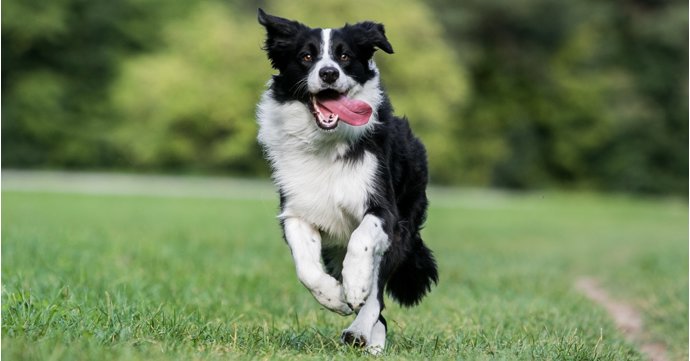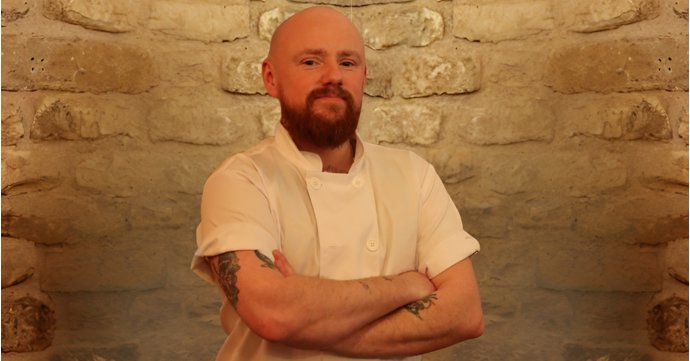With a whole host of health and behavioural benefits, including shinier coats and improved digestion, it's easy to see why so many dog owners are choosing to feed their precious pooches a raw food diet.
And with more and more Gloucestershire families becoming paw-rents for the first time, it's never too early to start — with SoGlos speaking to local raw food provider, Cotswold RAW, to get its top tips on choosing the right raw food for your new puppy.
About the expert - Cotswold RAW
Cotswold RAW is an independent, family-run business that produces nutritionally-complete raw food dinners for dogs, delivered straight to your door as part of its fuss-free subscription service. Its BARF-approved formula features raw meat, bones, herbs and seasonal vegetables to replicate a dog’s natural diet, with no nasty additives.
As well as ranges for active adults, working and senior dogs, Cotswold RAW caters for young pups with its puppy range, containing all the nutrients they need to grow big and strong.
For families bringing home a new puppy that was not raised on raw, what’s the best way to introduce them to a raw food diet?
Most puppies will wolf down the tasty raw dog food immediately, but for the more cautious we would recommend gradually switching to Cotswold RAW dog food by decreasing the amounts of kibble over a seven day period. It will take between one-to-two weeks to see the benefits.
It's important to be mindful that your new puppy will have had a bit of upheaval when arriving at a new home, so don't be too hard on any regime change. Introduce raw food gradually, keeping some familiarity. Lots of breeders send you home with a bit of blanket to remind them of their litter and mum, for example.
How often should new owners be feeding their puppy - and
how much food should they give them?
Most of our clients feed their puppies around three times a day, initially.
A puppy should be fed approximately the same amount of food as it will need as an adult — the commonly used guideline is two-to-three per cent of their ideal adult bodyweight, bearing in mind that small breeds will require slightly more and large breeds slightly less. A 40 kilogram dog doesn't need twice as much as one that weighs 20 kilograms!
It's worth keeping in mind that this guideline is approximate and you should weigh your puppy regularly to check on its development.
A high calorie count can have a negative affect on your puppy's growth, both directly through the excess of nutrients they're consuming and indirectly through excess hormone activity. We don't want a mismatch of bone-to-body growth and overfeeding increases this risk, so 'free feeding' your new pup isn't recommended.
What are the main differences between the Cotswold RAW
puppy recipe and adult food range?
They are both centred on our award-winning 80/20 recipe, which is a complete meal and complies with the FEDIAF guidelines. It contains 80 per cent raw meat and bones, with the other 20 per cent made up from fresh vegetables and natural supplements.
Ultimately, our puppy recipe uses our leaner proteins, with the choice of chicken; beef; and beef and tripe. It's formulated with the ideal energy density and calcium to phosphorous ratio for young puppies.
We also use a finer ground mince which contains Diaturm — a natural supplement with organic turmeric, freshwater food-grade diatomaceous earth and camomile, designed to support dogs' intestinal health and maintain a hygienic gut.
Why is it important to get the right balance of calcium and phosphorus in a puppy’s diet?
There must be more calcium than phosphorous — at Cotswold RAW, we aim for a ratio of between 1 and 1.5 to 1.
Too much calcium isn’t a problem in adult dogs who can regulate their calcium levels but young puppies need the right amount, as a high calcium content can generate rapid growth and cause them to develop a weak skeletal structure.
Our recipes are 80 per cent meat which is a good source of phosphorous, so it’s essential that our meals are balanced out with bone for that all-important calcium, too.
At what age can a puppy transition onto the adult
range?
Most breeds start the switch to our 80/20 Active range at around six months old. Larger breeds can stay on the food for longer because their full development happens over a longer period of time.
Are natural treats and supplements suitable for
puppies?
Our pure meaty strips and fishy training treats are soft and can be used to reward puppies for good behaviour.
The meaty bones and chews are best introduced when their adult teeth develop, and we always recommend supervision. It's crucial that you choose a product that is appropriate for your dog's size, breed and age when shopping for bones.
Any raw feeding tips for pregnant dogs?
If you are feeding a decent commercial raw food like Cotswold RAW, you don’t need to do much before she produces. Do give her 15-to-20 per cent more food and, although cereal generally gets a bad press with us raw feeders, I’d give her some All Bran or something similar to boost her iron, zinc and vitamin E levels.





















